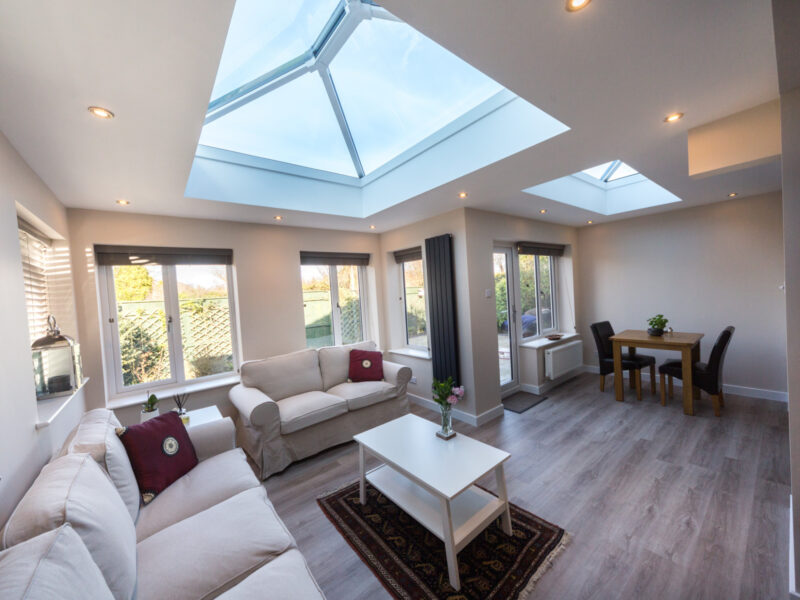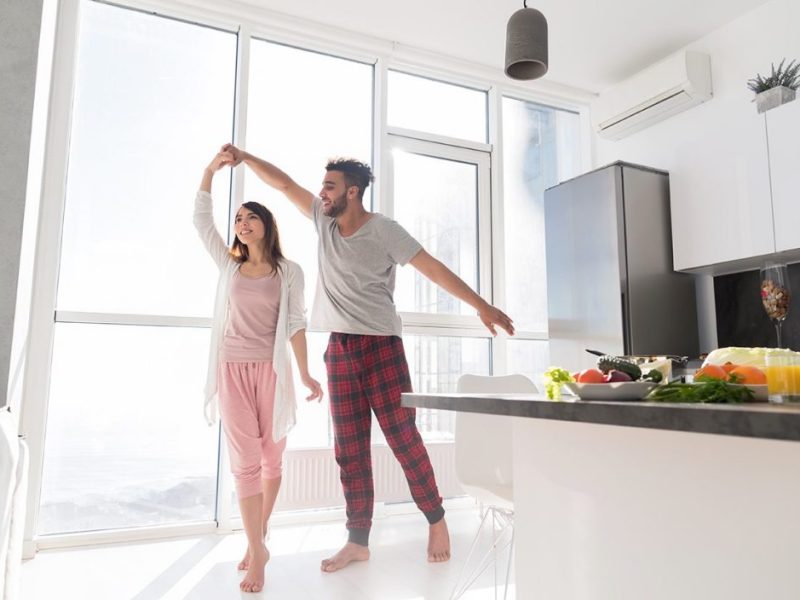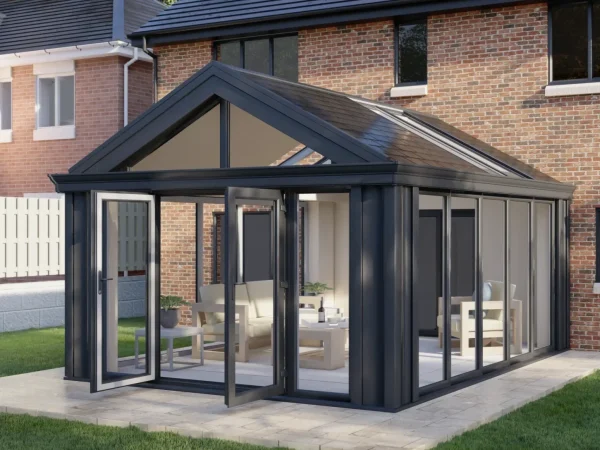Door won’t close or lock properly
Is your door not closing or locking properly? The first step to figuring out a solution is identifying the source of the problem. Try to find out whether it’s the lock or a different part of your door that’s causing the issue.
Door won’t close
If your door won’t close, check to see if anything is preventing it from shutting. Obviously, this is usually easy to spot. But you’d be surprised how many times doors are just catching on doormats or items on the floor.
If you’re not lucky enough to have a simple obstruction as the problem, you’ll need to take a look at the perimeter of the door. Pay particular attention to the hinges and where the door connects to the wall. Is everything in order? You can also see if anything is in the way of the bolts around the door frame.
Be aware that doors are prone to working a little differently as the temperature changes (this is even more of an issue with PVCu doors). What can you do about it? Well, as hot and cold weather makes your door contract or expand, the best thing you can do is counteract it.
If the heat is preventing your door from closing, simply wipe around the edge of the door with a cold, damp cloth. If your door isn’t closing due to cold weather, do the same but with a hot cloth. If this trick doesn’t work on the first try, repeat it a few times and see if it makes a difference.
Door won’t lock
So, your door shuts perfectly well but doesn’t lock? When this happens, there’s usually a problem with the latch or locking mechanism.
The first thing you can do is see if it’s a problem with alignment. Does the latch align with the strike plate on the frame? If it doesn’t, remove the strike plate and replace it so the latch matches up with it. You can do this yourself, but it is slightly fiddly, so you might want some help.
If you have a problem with one of our doors, because of our comprehensive insurance-backed guarantee, we’re more than happy to repair it free of charge or replace it if necessary.
The key won’t turn
We’ve all felt the frustration of trying to unlock a door, but finding that the key just won’t turn. It’s the last thing you want to deal with when you’re leaving in a hurry or returning home after a long day.
When a key won’t turn, the first thing we advise (apart from checking that it’s the correct key!) is that you check whether there is an obstruction preventing the turning movement. Grab a torch and check for any debris in the lock. If you see some dirt in there, unclog the mechanism by applying graphite spray or a silicone-based lubricant in the lock. Try to stay away from oil-based WD-40, as it can cause clogging issues further down the line.
If debris isn’t the issue, you might be dealing with a poorly cut key. If you have another key for the door, see if there is a problem with this one too. If not, you’ve identified the culprit! Take the functional key to a reliable locksmith and get some new keys cut.
Of course, you might just have a faulty lock. If this is the case, you’ll need to get a brand new lock fitted. Just remember that when you’re messing around with your lock, never force a key to turn in the lock. It might break and make the situation worse.
A crack in the door or glazing
Cracks in doors (or the glass panels within them) can appear for a range of reasons. If you notice one, even a small one, we recommend fixing it straight away before it has a chance to get worse. Small crack, small problem. Large crack — that’s when you have a real issue on your hands!
If the crack wasn’t your fault, contact your door’s manufacturer. They should be able to repair it for you.
Broken or loose door handle
As door handles are constantly being used, they can become loose or break over time.
If you’re experiencing this with your door handles, tighten any loose screws you find in-situ. If that’s not working, remove the entire handle (and base) and replace it taking care to tighten each and every screw.
A doorknob can also lose its grip on the spindle, causing it to be too loose when turning. Look at the collar on the doorknob for a loose screw and tighten it.
Door hits the wall
If your door is always hitting the wall behind it, a doorstop can prevent it from making a thud. You won’t have to hear the annoying bang every time someone opens it. Plus, you’ll have a dent-free wall.
Leaking door
If your door is leaking, you could either have a blocked drainage area at the bottom of the door frame or old, worn seals that need replacing. Are the seals the problem? Replace poorly functioning ones. If your seals are new but still causing problems, they might just need popping back into place.
Draughty door
Dealing with a draughty door? Look at your door’s edges. If there are gaps, simply add weatherstripping to block them. Getting a door sweep or fabric draught excluder for the bottom of your door can also be helpful.
Condensation in glass door panels
Do you have condensation in your door’s glass panels? As this means that moisture has snuck into your double or triple glazing, you might be grappling with a broken seal.
Unfortunately, as a broken seal means you no longer have an Argon-filled gap between the panes, you’ll need to replace the panel. If this happens with one of our doors, we can replace it for you.
Time for a new door?
If you’re experiencing more than one of these issues, consider getting a new, fully functional door. Take a look at our range of exterior doors and find one that’s right for you. If you want to chat through your options, you can always give us a call or drop by our Hayle showroom.
 Architect Designed Living Spaces
Architect Designed Living Spaces
 Finance Options Available
Finance Options Available








